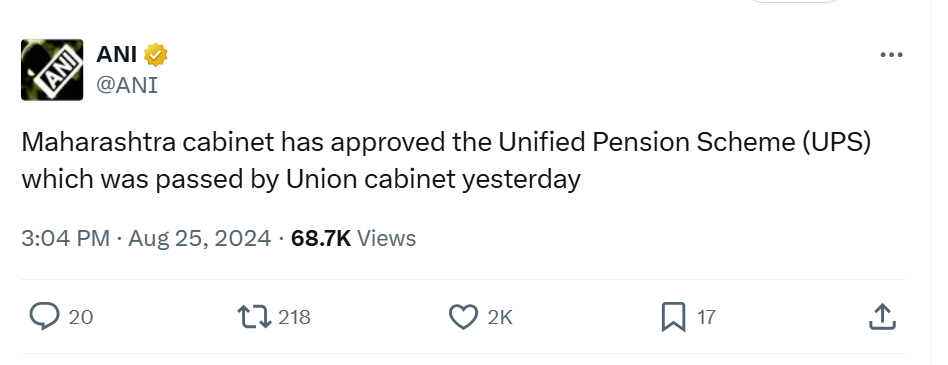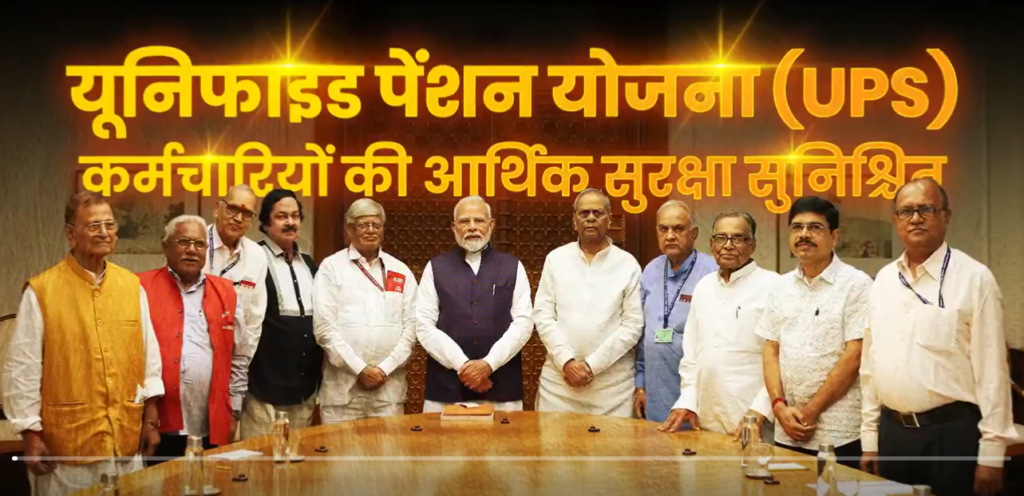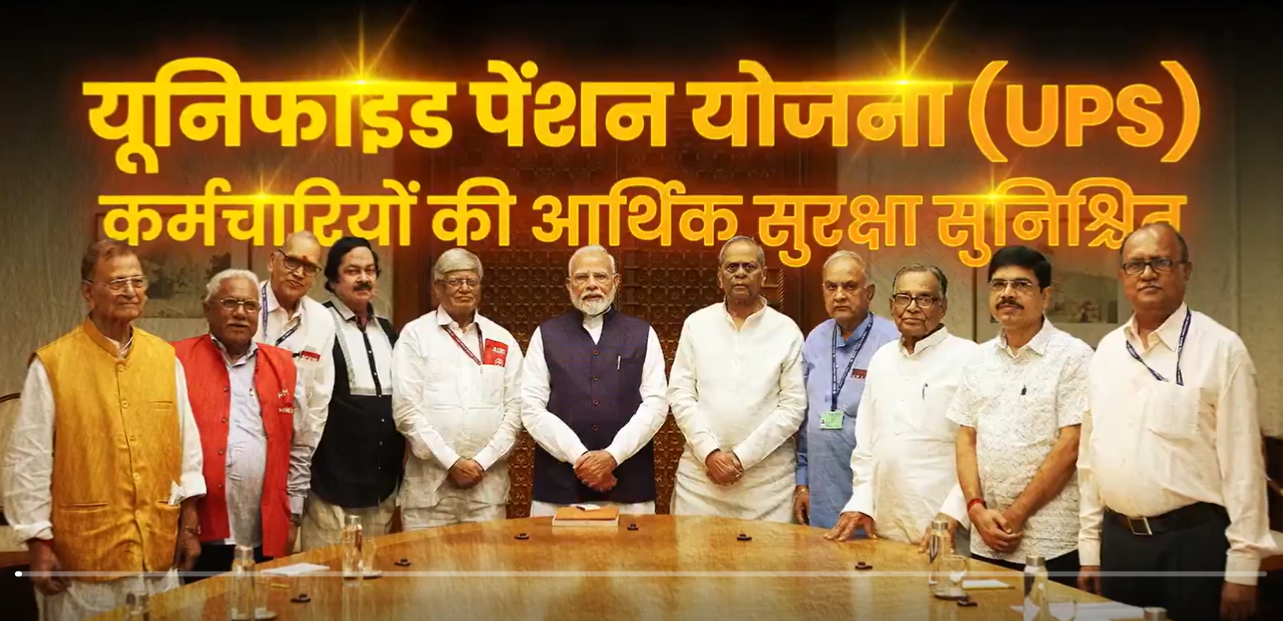In a significant development for public sector workers, the Maharashtra cabinet has officially approved the implementation of the Unified Pension Scheme (UPS) for its state government employees. This decision follows the central government’s announcement of the UPS, which was approved by Prime Minister Narendra Modi’s cabinet on August 24, 2024. With this move, Maharashtra aims to provide enhanced retirement benefits and financial security for its workforce.

Unified Pension Scheme (UPS)
The Unified Pension Scheme is designed to offer government employees a guaranteed pension, particularly benefiting those who joined service after January 1, 2004. Under this scheme, employees who opt for UPS from the National Pension System (NPS) will be entitled to a pension amounting to 50% of the average basic pay drawn over the last 12 months before retirement. However, to qualify for this benefit, employees must complete a minimum service period of 25 years.
Key Features of the UPS:
- Guaranteed Pension: Employees will receive a guaranteed pension based on their average basic pay during the year leading up to retirement.
- Minimum Service Requirement: A minimum of 25 years of service is required to qualify for the full pension benefit.
- Proportionate Pension for Shorter Service: Employees with a shorter service period (at least 10 years) will receive a proportionate pension.
- Minimum Pension Guarantee: The scheme also guarantees a minimum pension of Rs. 10,000 per month for those who retire after completing at least 10 years of service.

Details of Maharashtra’s Implementation
The Maharashtra cabinet convened on August 25, 2024, and made the pivotal decision to roll out the UPS for all state government employees, effective from March 2025. This initiative aims to ensure that state employees receive similar benefits to their central counterparts, thereby enhancing their financial stability during retirement. An official statement from the government highlighted that the new scheme is part of broader efforts to improve the welfare of public sector workers.
Impacts on State Government Employees
With the implementation of the UPS, approximately 23 lakh central government employees will benefit from this initiative, and the number could rise to 90 lakh if state governments across India adopt the same framework. This initiative aligns with the government’s commitment to providing a dignified and secure future for its employees.
Additional Initiatives by the Maharashtra Government
In conjunction with the approval of the UPS, the Maharashtra cabinet also approved several other key projects aimed at improving infrastructure and public services in the state:
- Expansion of Uninterrupted Power Supply: The cabinet greenlit the proposal to expand the uninterrupted power supply scheme, ensuring that more farmers receive consistent electricity during the day. This initiative is crucial for enhancing agricultural productivity and supporting the farming community in Maharashtra.
- River Linking Project: The cabinet approved the ₹7,000 crore Nar-Par-Girna river linking scheme. This ambitious project aims to benefit districts in north Maharashtra, including Nashik and Jalgaon. The project involves lifting 9.19 TMC of water from the Nar, Par, and Auranga rivers and transporting it through a 14.56-kilometre tunnel to be released into the Girna river basin near the Chankapur dam. This water transfer is expected to significantly enhance water availability for irrigation and domestic use in the region.
Political Context and Upcoming Elections
The Maharashtra assembly’s tenure is set to conclude in November 2024, with elections likely to take place in October-November. The cabinet’s approval of the UPS and other welfare initiatives may be seen as a strategic move to bolster support among state employees and the farming community in the lead-up to the elections.
Conclusion
The approval of the Unified Pension Scheme by the Maharashtra cabinet marks a significant step towards ensuring financial security and dignity for state government employees. By aligning state benefits with those offered by the central government, Maharashtra is setting a precedent for other states to follow. The scheme, alongside other welfare initiatives, reflects the government’s commitment to improving the quality of life for its workforce and addressing the pressing needs of the agricultural sector.
As the implementation date approaches, both employees and stakeholders will be keenly observing how these changes unfold and impact the public service landscape in Maharashtra.
Important Links: In case if you want to read this guide in Hindi and Marathi then click on the below links.
| Language | Link |
| English | Unified Pension Scheme (UPS) Guide in English |
| Hindi | Unified Pension Scheme (UPS) Guide in Hindi |
| Marathi | Unified Pension Scheme (UPS) Guide in Marathi |
